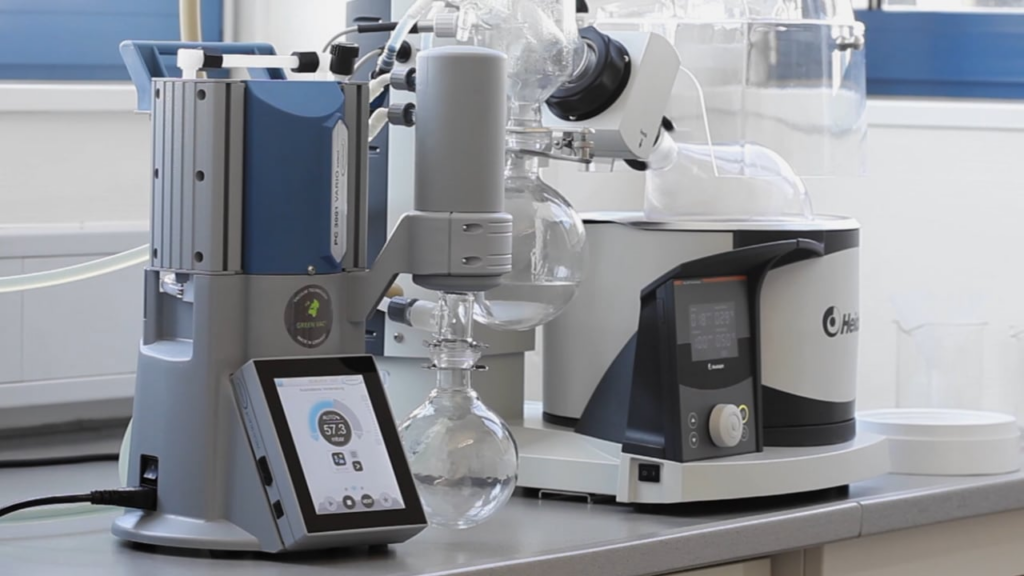In the ever-changing scientific research and industrial application landscapes, data-driven insights have turned out to be very useful for optimizing laboratory operations. The use of data to improve laboratory equipment performance does not only enhance efficiency and accuracy but also extends the life of important assets. This paper looks into how data-driven insights can be used to boost laboratory equipment performance and provides actionable ideas for B2B companies.
Contents
Importance
Data driven insights are essential in order to make informed decisions about the maintenance, operation and optimization of lab equipment. Labs that collect and analyze data from different sources are able to identify patterns, predict issues, and implement changes that improve overall performance.
Key Benefits
Predictive Maintenance: Identifying problems before they cause breakdowns so as to reduce downtime and repair costs.
Performance Optimization: Using data to tune equipment settings for optimal operation.
Cost Efficiency: By targeting specific areas for improvement, unnecessary operational costs can be reduced.
Implementing Data Collection Systems
A solid foundation for a data-based approach is efficient data gathering. In this regard, labs should put in place robust systems of collecting comprehensive information about their pieces of equipment.
Types of Data Collection Systems
Sensors & IoT Devices: It involves the installation of sensors on laboratory equipment which enable monitoring various parameters such as temperature, pressure or operational hours.
Integrated Software: These are software solutions which link up with lab apparatuses with an aim of storing their performance details.
Manual Data Entry: recording observations and performances manually so that they can later be digitized and analyzed
Essential Data Points
Operational Metrics: Information about usage trends like operating hours as well as frequency in use.
Performance Indicators: The measurements reflecting key indicators such as temperature stability, energy consumption, and output quality.
Environmental Conditions: The factors such as room temperature and humidity when not monitored can affect the performance of the equipment
Analyzing Data for Actionable Insights
After collecting data, the next step is to analyze it so that logical decisions can be made based on its results. Advanced analytics tools and techniques can help transform raw data into meaningful information.
Analytical Techniques
Trend Analysis: Looking at trends over time so as to find patterns and also predict potential problems in future.
Comparative Analysis: It involves comparing performance metrics across different equipment which helps in identifying outliers or best practice areas where further improvements might need to take place.
Predictive Analytics: This makes use of statistical models and machine learning algorithms to determine what will happen with a piece of equipment in future relative to maintenance.
Enhancing Equipment Performance with Data Insights
By embracing data-driven insights, laboratories are able to implement targeted measures aimed at enhancing their equipment’s performance while ensuring its durability.
Optimizing Maintenance Schedules
Predictive Maintenance: Planning routine maintenance activities based on predictive analytics that minimize sudden breakdowns.
Condition-Based Maintenance: Engaging in reactive repairs only when data from real-time measurements indicates that a given tool is actually wearing out.
Improving Operational Efficiency
Fine-Tuning Settings: Adjusting equipment settings according to performance data for optimized work efficiency and output quality
Reducing Downtime: Dealing with identified challenges proactively since downtimes cost money
Upgrading and Replacing Equipment
Identifying Inefficiencies: Using information from data, it is possible to know which devices are underperforming thus making informed choices about upgrades or replacements.
Integrating New Technologies: Developing more advanced ways of doing things like vacuum membrane pumps for laboratory use which improve performance.
Case Study: Glycol Ether Distillation Companies
Companies dealing in glycol ether distillation can immensely benefit from data driven insights to optimize their distillation process.These organizations can guarantee their machines work effectively and reliably through monitoring and analyzing data.
Data Collection for Distillation Processes
Temperature and Pressure Monitoring: Having sensors that follow the temperature and pressure levels of the distillation process.
Flow Rate Measurement: Checking flow rates of glycol ethers to ensure a smooth operation of the distillation process.
Quality Control Metrics: This involves collecting information about the purity, yield, and other quality indicators for distillate.
Implementing Data-Driven Improvements
Optimizing Distillation Parameters: This entails changes made based on feedback from the system to enhance efficiency and product quality in terms of temperature and pressure settings.
Preventive Maintenance: This means scheduling maintenance activities based on predictive data collected for operational management purposes to minimize downtime, as well as extend equipment lifespan.
Enhancing Safety: This involves scanning through data looking for any possible hazards so that they can be controlled.
Leveraging Advanced Technology for Data Analysis
This is because it is using laboratory equipment which produces huge amounts of data which need to be analyzed by advanced technology tools before being interpreted correctly; this is where these tools come in handy that facilitate real-time monitoring, predictive maintenance, comprehensive reporting etc.
Role of Software and Analytics Tools
Real-Time Monitoring: There are various software providing real-time displayed inputs with prompt alerts for immediate actions.
Automated Reporting: Making reports automatically that sum up key performance indexes and findings at once.
Machine Learning Algorithms: Applying ML algorithms to predict behavior patterns in order optimize maintenance schedules effectively.
Benefits of Advanced Technology
Increased Accuracy: When compared to human analysis, advanced analytics tools provide better or more accurate predictions. Efficiency: By automating data analysis, data processing time is reduced thus reducing time spent in monitoring processes and maintaining equipment.
Efficiency: Through automation of data analysis, there is reduced time and effort in monitoring and maintenance tasks.
Scalability: where these tools take in huge amounts of data from several pieces of equipment to give a holistic view on laboratory operations.
This has led to various laboratories coming up with different ways to enable them to manage and optimize the lab equipment effectively. For this reason, laboratories should establish effective data collection systems, analyze information for actionable insights as well as adopt advanced technology to increase efficiency and the lifespan of their machines. Whether it’s optimizing maintenance schedules, improving operational efficiency, or integrating new technologies like vacuum membrane pumps, the benefits of a data-driven approach are clear. For glycol ether distillation companies and other industrial laboratories, adopting these practices can lead to improved productivity, reduced costs, and higher-quality outcomes.
Investing in data-driven strategies for laboratory equipment management is essential for B2B businesses aiming to stay competitive and achieve long-term success. By harnessing the power of data in this context they can ensure that their research tools work optimally for the best results during experimental research while also serving general industrial needs.



